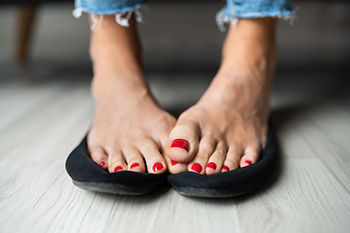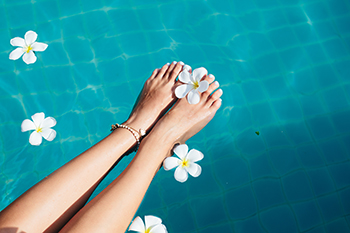
The foot condition that is known as plantar hyperhidrosis can be uncomfortable. This ailment is characterized by excessive sweating of the feet and affects approximately five percent of the population. This condition falls into two categories. The hands, feet, and underarms are affected by primary hyperhidrosis. This usually occurs during the day and does not occur while sleeping. Sweating that affects larger areas of the body can fall into the category of secondary hyperhidrosis, which may be caused by taking a specific medication. Having feet that sweat profusely may lead to developing other foot conditions. These may include fungal infections, dermatitis, or blisters. If you have plantar hyperhidrosis, it is suggested that you confer with a chiropodist who can offer you treatment options that are best for you.
Plantar hyperhidrosis is a medical condition that causes excessive sweating of the feet. This problem is not only embarrassing but can also cause a variety of foot health problems if left untreated. Fortunately, there are many effective treatments available for plantar hyperhidrosis. If you have very sweaty feet, please consult with one of the specialists from Thornhill Foot Clinic. Our chiropodists can help you maintain the health of your lower limbs and your mobility.
Signs & Symptoms
Excessive foot sweat
Sweating from both feet
Slipping out of shoes due to sweat
Damp footprints
Ruined shoes
Frequent foot infections
Friction blisters
Whitish foot color
Wrinkly, pruney feet
Cold feet
Strong odor
Treatment Options
Topical antiperspirants - Powders, creams, or gels that are applied directly to the feet to prevent sweating; can be over the counter or prescription strength
Oral medications - Pills taken by mouth to reduce sweating temporarily
Iontophoresis - A procedure that uses a mild electrical current conducted through water to reduce activity in hyperactive sweat glands
Botox - Injected into the feet to prevent activation of sweat glands
In addition to these treatment options, footwear modifications, such as wearing shoes and socks made of breathable or moisture-wicking materials, are also suggested. If you have any questions, please feel free to contact our office located in . We offer the newest diagnostic and treatment technologies for all your foot care needs.




